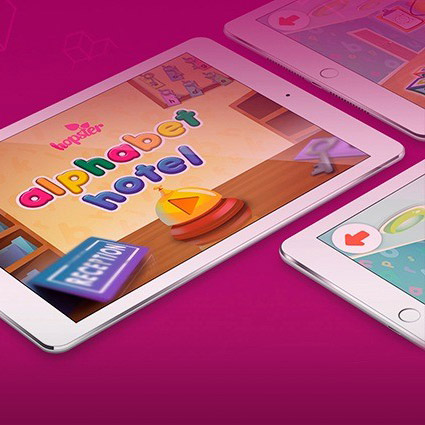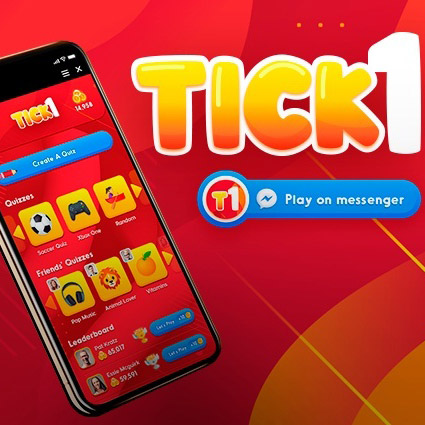Mobile sports games have grown from small-scale experiments into a significant part of the global gaming industry. Player demand has shifted toward experiences that are quick to access, easy to play, and competitive enough to keep attention over time. As smartphone hardware improved, the technical limitations that once held back performance and graphics quality disappeared, opening the door for more ambitious projects. Publishers and developers began targeting mobile sports as a profitable category with long-term potential.

Competitive play is now a major driver of downloads, revenue, and player retention. Multiplayer functionality, ranked systems, and live tournaments have turned mobile sports into a space that attracts both casual and professional audiences. Clear examples include football, basketball, and racing games that achieve millions of installs and sustain large online communities. Monetization models, such as in-app purchases and seasonal passes, strengthen their market position.
A professional mobile game development company plays a central role in this process by building the infrastructure, ensuring stable multiplayer features, and supporting cross-platform compatibility. Their expertise allows publishers to release products that are both commercially viable and technically reliable.
Introduction to the Rise of Mobile Sports Games

Mobile gaming trends reflect a sharp increase in sports titles that mix competitive play with simple controls. Developers have moved from basic mechanics toward polished, feature-rich projects that run smoothly even on mid-range devices. Player interest in football, basketball, and racing games illustrates the strong demand for accessible formats that still deliver competition.
Social functions, including friend challenges and live tournaments, expand retention rates. Many titles now integrate cross-platform options so players on tablets and smartphones can compete together. Industry reports show that mobile sports consistently rank among the top downloads worldwide, signaling their stable position. A study from Diva-Portal showed that mobile games incorporating social features, such as playing with friends or clan systems, have significantly higher long-term retention rates.
Why Mobile Sports Games Appeal to Millions
Sports titles often require minimal learning, making them approachable for users across different age groups. For example, mobile arcade games demonstrate why the genre remains popular. Short matches fit into daily routines, yet progress systems keep players invested over time.
Fans also enjoy the link between real sporting events and in-game content, such as seasonal updates or licensed teams. Competitive features encourage repeated play and foster active communities. Strong monetization ensures continuous updates, and publishers keep investing because the return on these projects remains reliable. As a result, mobile sports games attract millions globally.
Accessibility That Brings Players Together
Sports games on mobile stand out for their low entry barriers. Many titles require only a touch interface, so no special equipment is needed. Cross-device compatibility further strengthens this accessibility since users can switch between a smartphone and a tablet without losing progress.
For example, football games like FIFA Mobile allow anyone to start playing within minutes, yet advanced modes add depth. Competitive ranking systems bring together players of different skill levels while still creating balanced matches.
Some accessibility factors include:
- Simple controls. Tap and swipe mechanics allow instant play without tutorials.
- Light hardware needs. Even mid-range phones can run popular titles.
- Social functions. Integrated chat and friend lists help build communities.
- Cross-platform play. Shared servers allow fair matches across devices.
Such accessibility directly explains the broad reach of mobile sports titles across regions, age groups, and demographics.
Free to Play Models and Smart Monetization
Publishers rely heavily on free-to-play models to reach broad audiences. Games become accessible to anyone without an upfront payment, which maximizes downloads. Revenue is generated through optional in-app purchases, ad placement, and seasonal passes. Examples like NBA Live Mobile and Asphalt show how cosmetics, limited-time events, and player packs generate significant income.
Important monetization approaches include:
- Cosmetic purchases. Skins, uniforms, or stadium designs give personalization without affecting balance.
- Event passes. Time-limited rewards encourage long-term engagement.
- Advertisements. Rewarded ads allow players to gain extra content without spending.
- Premium upgrades. Small purchases unlock advanced features or remove ads.
Smart use of such models ensures financial stability for publishers while keeping the games widely available. Developers balance user satisfaction with profit generation, which helps sustain active player bases and secure constant content updates.
Social Play Features That Keep Users Returning
Strong communities often determine the success of mobile sports titles, and developers design systems to keep players interacting. Friendly competition through direct challenges makes games more personal. Ranked ladders create motivation by showing progress compared to others. Multiplayer chat and team formation allow users to organize, communicate, and share strategies.
Main social features shaping engagement are:
- Friend challenges. Players invite contacts for one-on-one matches that strengthen long-term interest.
- Guilds and teams. Groups coordinate gameplay, share rewards, and compete in collective events.
- Live chat tools. Communication functions enhance collaboration during multiplayer sessions.
- Spectator modes. Viewers can watch matches and learn from skilled opponents.
Games such as FIFA Mobile and Asphalt 9 demonstrate how strong social design builds loyal audiences. Players stay active not only for competition but also for the sense of belonging in digital communities.
Events and Live Content as Engagement Drivers
Limited-time content often determines how long users keep playing after the initial download. Publishers organize themed events to mirror real-world sports seasons, which makes in-game activity feel current. Exclusive tournaments offer valuable rewards and create urgency. Regular content drops, such as new stadiums or vehicles, refresh the gameplay loop without requiring an entirely new release.
Effective event strategies feature:
- Seasonal tie-ins. Updates connected to global tournaments keep fans engaged with the ongoing sports culture.
- Limited rewards. Time-sensitive prizes encourage players to return daily.
- Special modes. Unique rule sets provide fresh challenges for veterans and newcomers.
- Collaborations. Partnerships with brands or teams bring recognizable assets into the game.
Examples like NBA Live Mobile with its playoff events or eFootball with seasonal team rotations prove how live content creates recurring spikes in activity, sustaining user engagement over months and years.
Cricket Manager — Building a Global Cricket MMO

Cricket Manager is a full-cycle mobile MMO where players train athletes, manage stadium finances, and compete in leagues worldwide. Developed by Game-Ace with advanced optimization techniques, it reached 100K+ downloads and delivered a realistic cricket simulation experience.
Mobile Sports Games Versus Traditional Sports Gaming
Comparisons between mobile sports titles and traditional console or PC sports games highlight different priorities. Mobile projects focus on speed, portability, and accessibility, while console and PC aim for depth, advanced physics, and lifelike visuals. Both approaches succeed, but audiences often split depending on lifestyle and resources.
Professional studios invest in each format differently because revenue, player commitment, and technical infrastructure vary sharply. Understanding these contrasts helps clarify why mobile sports dominate casual segments while consoles still lead in detailed simulation.

Depth of Play Compared to Convenience on Mobile
Console and PC sports games offer complexity through detailed mechanics, advanced AI opponents, and extensive customization. Players often spend hours managing teams or practicing in realistic training modes. Mobile sports, on the other hand, prioritize quick entry, shorter matches, and intuitive control schemes. A title such as FIFA 23 on console demands in-depth knowledge of tactics, while FIFA Mobile enables a few matches during short breaks.
Key contrasts can be observed:
- Simulation detail. Consoles emphasize precise ball physics and complete player animations.
- Session length. Mobile experiences last minutes instead of hours.
- Control systems. Controllers enable advanced combos, whereas mobile favors swipes and taps.
- Learning curve. Deep mechanics dominate consoles, while mobile continues to onboard users quickly.
Players choose depending on available time, desired immersion, and preferred devices, creating a distinct split between convenience-driven and depth-focused audiences.
Revenue Patterns Across Devices and Platforms
Earnings in traditional sports games often rely on upfront purchases, expansion packs, and premium editions. Annual releases, such as NBA 2K, illustrate this model, where players pay once and occasionally purchase add-ons. In contrast, mobile titles center revenue on free-to-play systems with in-app purchases, advertising, and seasonal passes.
The primary differences are clear:
- Upfront pricing. Console and PC games generate instant revenue at launch.
- In-app purchases. Mobile users pay selectively for cosmetics, boosts, or passes.
- Longevity of revenue. Mobile models provide steady cash flow over months or years.
- Market reach. Smartphones penetrate wider demographics, expanding monetization potential.
A mobile release like Clash of Clans sustains income long after launch, while console titles usually peak near release and taper over time. Each model suits its platform’s strengths and user expectations.
Player Dedication and Average Time in Game
Player behavior varies widely across devices. Console gamers often schedule long sessions that exceed several hours, which suits in-depth sports simulations. Mobile users tend to engage in multiple shorter sessions throughout the day. Both patterns represent dedication but in different formats, and research confirms this difference: a large-scale analysis of 118 billion hours of mobile playtime across 214 countries showed that most mobile sessions are measured in minutes rather than hours, highlighting the fragmented yet frequent nature of mobile play.
Observed distinctions include:
- Session style. Consoles promote fewer but longer play periods.
- Daily access. Mobile allows constant return visits thanks to portability.
- Retention factors. Consoles rely on story modes or career modes, while mobile games lean on rewards and events.
- Time commitment. Average console playtime is high per session, mobile spreads engagement across more frequent but shorter logins.
A console fan may spend a weekend mastering MLB The Show, whereas a mobile player may check FIFA Mobile several times daily. Both behaviors reflect commitment shaped by device convenience.
Technology Foundations Powering Each Gaming Format
Different infrastructures sustain sports gaming on mobile versus traditional systems. Console and PC rely on high-end GPUs, complex physics engines, and local storage for heavy assets. Mobile developers focus on optimization techniques to keep apps fast and responsive under hardware limits. Examples include static and dynamic batching, texture atlasing, and cloud-based multiplayer servers.
Technical contrasts include:
- Graphics power. Consoles use advanced rendering pipelines, while mobile balances visuals with efficiency.
- Networking. Mobile games rely heavily on servers to manage MMO features, and consoles often combine local and online play.
- Storage. PC and console support massive downloads, mobile favors compact file sizes.
- Performance optimization. Compression and batching methods keep mobile titles smooth across device tiers.
Projects like Cricket Manager highlight server-side calculations for scalability, whereas console releases lean on local processing for immersion and stability.
How Brands Gain Value Through Mobile Sports Games
Sports brands increasingly use mobile titles to extend visibility and strengthen loyalty. In-app presence places them directly in front of engaged audiences who spend consistent time in play. Partnerships with game developers secure branded content such as jerseys, stadiums, and promotional events. The constant updates and global reach of mobile sports games guarantee exposure across diverse regions, ensuring measurable value for sponsors and rights holders alike.
Partnering with Leagues and Sports Organizations
Formal collaborations between developers and official leagues generate authenticity. Licensed players, logos, and venues add credibility that attracts fans who want an accurate representation of their favorite teams. Partnerships also unlock revenue-sharing opportunities since leagues benefit financially from licensing deals while developers gain legitimacy.
Examples illustrate the impact: FIFA Mobile integrates real-world clubs with updated rosters, while NBA Live Mobile mirrors actual league events. Such cooperation makes the games more appealing and strengthens the link between physical sports and digital competition.
Revenue is shared, fans are engaged, and long-term collaboration keeps both parties invested. Instead of one-time promotions, these relationships often turn into ongoing content pipelines that ensure constant relevance and trust among players.
Advertising and Sponsorship Models in Sports Apps
Ad formats in mobile sports games differ sharply from traditional banners or TV spots. Players interact with them, and that interaction drives measurable outcomes.
Distinct methods are used:
- Dynamic stadium branding. Boards and uniforms display rotating sponsor logos.
- Rewarded videos. Users gain currency or items by choosing to watch ads.
- Event sponsorship. Branded tournaments attract attention while connecting products to competition.
- Integrated items. Virtual sneakers or jerseys mirror real-world products.
The advantage lies in precision. Brands see click-through rates and engagement metrics in real time, which informs future campaigns. Unlike television sponsorships, performance is quantifiable and adjustable.
Expanding Fan Connections with Interactive Games
Interactive mechanics extend fan relationships far beyond the pitch or court. Mini-games, collectible systems, and social functions allow supporters to engage daily instead of waiting for the next match.
Notable ways clubs connect with fans:
- Exclusive content. Digital jerseys or player cards tied to live events.
- Season-linked updates. Game rosters refresh as real transfers happen.
- Leaderboards. Fans compete directly, reinforcing a sense of community.
- Live chats. Direct interaction during events builds immediacy.
So, eFootball uses real-world data to refresh rosters, giving fans instant access to current squads. That constant alignment keeps attention steady, even when seasons slow down, and ensures teams stay in front of their audiences daily.
Contact us to hire mobile game developers.
Strategic Benefits of Launching Mobile Sports Games
Launching mobile sports titles gives publishers and partners clear advantages. Entry costs remain lower than for large-scale console or PC projects, while the reach through app stores ensures broad adoption. Built-in analytics enable precise adjustments, and monetization models generate long-term revenue streams.
Lower Barriers Compared to Console or PC Titles
Producing console or PC sports games requires substantial budgets for 3D assets, voice acting, and advanced engine features. Mobile sports projects often bypass such requirements with simpler inputs and reduced asset scale. The result is faster development and easier updates.
Distinct factors set the difference:
- Budget scope. Mobile games demand smaller investments, reducing risk.
- Time to market. Shorter production cycles get products into players' hands faster.
- Device compatibility. A broad range of hardware accepts optimized builds.
- Maintenance. Frequent updates are easier to push on mobile platforms.
By lowering financial and technical barriers, studios can test new concepts without the heavy risks tied to console or PC markets.
Global Scaling Opportunities Through App Stores
App stores create instant worldwide distribution, which positions mobile sports games for rapid scaling. Unlike consoles, which often face region-specific release windows, mobile platforms allow for simultaneous global launches.
Scaling is supported in multiple ways:
- Unified platforms. Google Play and App Store offer central points of access.
- Built-in payment systems. Monetization becomes smoother with established store frameworks.
- Localization tools. Language support broadens adoption across continents.
- Promotion channels. Featured placements boost visibility without external campaigns.
A football title can launch in dozens of countries at once, reaching diverse demographics almost immediately. Such access makes mobile the preferred choice for publishers who prioritize speed and breadth in distribution.
Analyzing Player Behavior for Smarter Decisions
Mobile sports games provide precise data tracking that shapes business decisions. Metrics cover retention, session length, and in-game spending, which together form a complete view of user behavior. By studying these numbers, developers identify weak points and opportunities for improvement.
Practical methods include:
- Retention analysis. Monitoring how many users return after day one, seven, or thirty.
- Monetization tracking. Observing which items or passes generate the highest income.
- Engagement heatmaps. Identifying the most played modes or activities.
- Testing protocols. Mobile game testing uncovers bugs, balance issues, and usability flaws.
Such data-driven insight allows teams to refine gameplay, improve user experience, and plan future updates based on evidence rather than assumptions. Companies that act on analytics maintain competitive edges and higher revenue consistency.
Technology Trends Shaping Mobile Sports Games
Advances in AR, VR, and AI are redefining the mobile sports sector. Developers integrate immersive layers, smarter opponents, and predictive systems that expand gameplay depth. These technologies elevate engagement, turning sports apps into richer, more interactive environments for players worldwide.
Adding AR and VR to Sports-Themed Experiences
Augmented and virtual reality are no longer limited to console hardware. Mobile devices now support features that blend real and digital spaces, enriching how fans engage with sports. AR overlays display stats during live matches, while VR mini-games simulate stadium experiences.
Here are a couple of key directions:
| Trend | Practical impact |
| AR overlays | Show live stats or training metrics on screen. |
| VR modules | Offer short simulations, such as penalty shootouts. |
| Hybrid modes | Combine camera input with digital player cards. |
| Wearable sync | Connect data from smartwatches to in-game results. |
Titles like HomeCourt demonstrate AR’s potential in training, while lightweight VR kits transform phones into compact headsets. The blend of mobility with immersion makes such integrations increasingly valuable.
Using AI for Smarter Gameplay and Team Management
Artificial intelligence is reshaping how mobile sports games strike a balance between challenge and depth. Instead of relying on predictable scripts, AI adapts its tactics based on the player's style. Teams adjust formations mid-match, opponents anticipate actions, and training modules adjust goals to suit skill levels.
Distinct applications appear across gameplay:
- Adaptive opponents. AI dynamically adjusts difficulty to prevent frustration or boredom.
- Team strategy. Algorithms optimize formations and substitutions automatically.
- Predictive analytics. Player data informs scouting or transfer suggestions.
- User personalization. Match recommendations are tailored to playing history.
By embedding AI deeply into design, studios reduce the gap between casual sessions and professional-level management. A manager in FIFA Mobile can experience more nuanced decisions because AI calculates outcomes with far greater accuracy than earlier scripted systems.
Cloud-Based Access to Sports Games Anywhere
Cloud streaming makes mobile devices capable of running titles that once required powerful consoles. Instead of storing large files locally, users connect to remote servers that handle all heavy processing. The result is seamless play on phones with limited capacity.
Advantages appear across several areas:
- Instant access. No long downloads, players start within minutes.
- Consistent performance. Server hardware eliminates device-related slowdowns.
- Cross-device continuity. Progress follows users between phone, tablet, or even smart TV.
- Lower hardware demand. Affordable devices deliver experiences close to console level.
Services such as Xbox Cloud Gaming already support sports titles, while independent developers adopt similar approaches for broader reach. Cloud-based sports games combine flexibility with affordability, which helps publishers target regions where high-end hardware adoption is low.
Blockchain as a Tool for Digital Sports Ownership
Blockchain integration in mobile sports titles shifts how players view digital assets. Instead of temporary items, blockchain creates verifiable ownership of player cards, jerseys, or stadium upgrades. Transparency ensures items remain unique and transferable.
Main opportunities unfold in several categories:
- Collectibles. Limited digital cards represent real athletes with traceable ownership.
- Trading markets. Players exchange assets securely through peer-to-peer systems.
- Event rewards. Special blockchain-backed prizes commemorate tournaments.
- Cross-title use. Assets can, in some cases, transfer between compatible games.
Projects like Sorare illustrate how fans value ownership that persists beyond a single game. For developers, blockchain also provides new revenue channels through resale commissions and licensed partnerships. By formalizing digital asset rights, sports titles create ecosystems that extend both engagement and financial potential.
Case Study Spotlight on Bagged Up: Sports Prediction Game
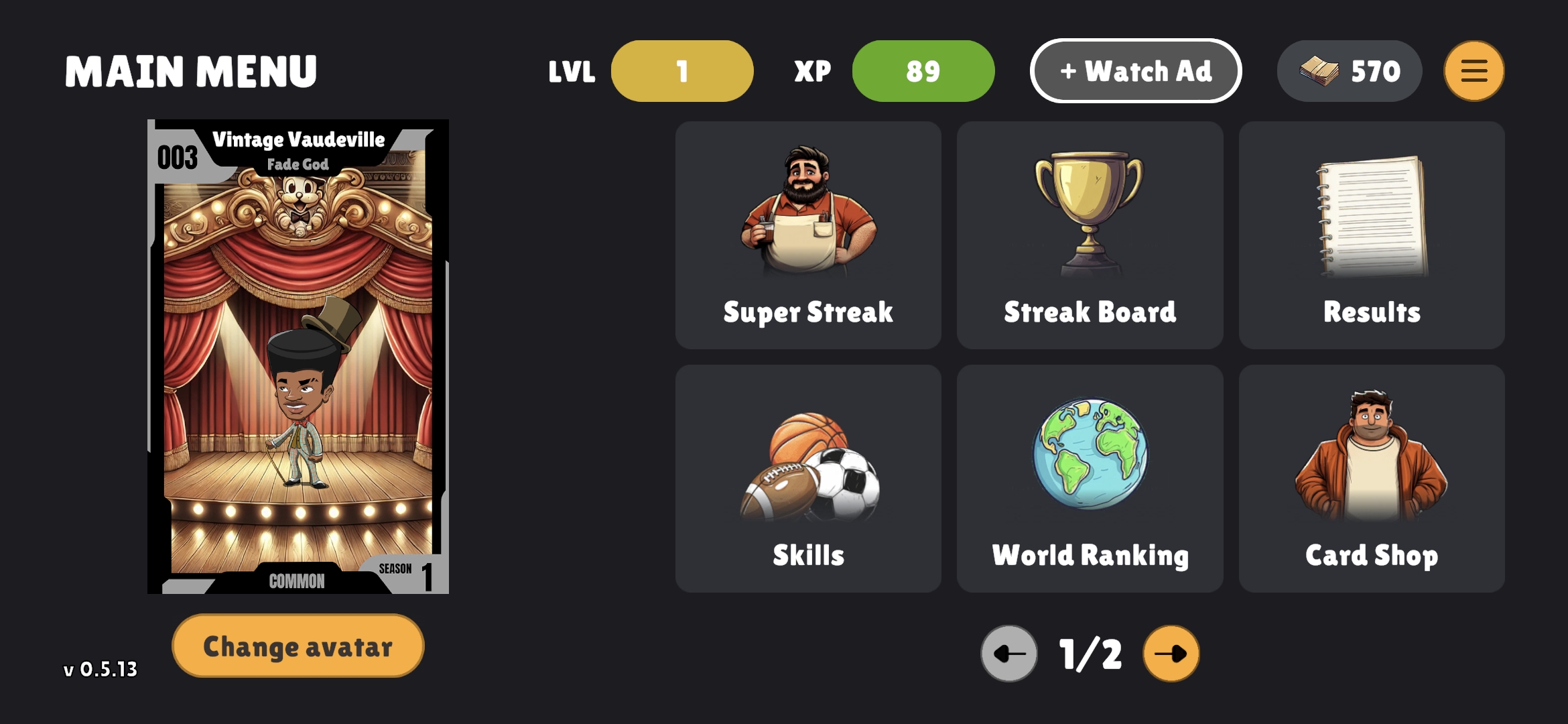
Bagged Up demonstrates how a mobile-first prediction title can balance casual play with competitive depth. Game-Ace delivered the whole cycle, covering design, backend, and deployment for both iOS and Android. Unity powered cross-platform development, while Firebase and PlayFab supported real-time logic, economy, and analytics.
Distinctive design choices shaped the experience:
- Daily predictions. Players answer three questions tied to live matches, earning points based on accuracy.
- Leaderboards. Weekly resets keep rankings fresh and motivate regular play.
- Card binder. Collectible avatars track progress and encourage long-term engagement.
- Skill focus. Success depends on consistent accuracy, not luck.

Results confirmed strong retention and scalability. Backend systems ensured stability, while the collection mechanics drove repeat logins. The project shows how prediction gameplay, social competition, and stylized design can work together to create sustainable value in the mobile sports segment.
How Game-Ace Can Help You Build Quality Mobile Sports Games
As a custom game development company, Game-Ace delivers mobile sports projects from initial concept through full release. The team covers every step, including design, programming, art, and backend development, while ensuring the final product runs smoothly across iOS and Android. By working with leading engines such as Unity and Unreal, developers create responsive controls, scalable multiplayer features, and user-friendly interfaces tailored to sports audiences.
Game-Ace assists with updates, live events, and post-release optimization to maintain user engagement and extend a title's lifecycle. Past experience in prediction games, management apps, and full sports simulations ensures that clients receive practical expertise and market-ready solutions. Contact us to explore how your project can move from idea to a polished mobile sports game.
 How to Make a Game App That Captures Users and Dominates the Market
How to Make a Game App That Captures Users and Dominates the Market  The Quest for Excellence: Unveiling the Best Gaming Platforms of Today
The Quest for Excellence: Unveiling the Best Gaming Platforms of Today 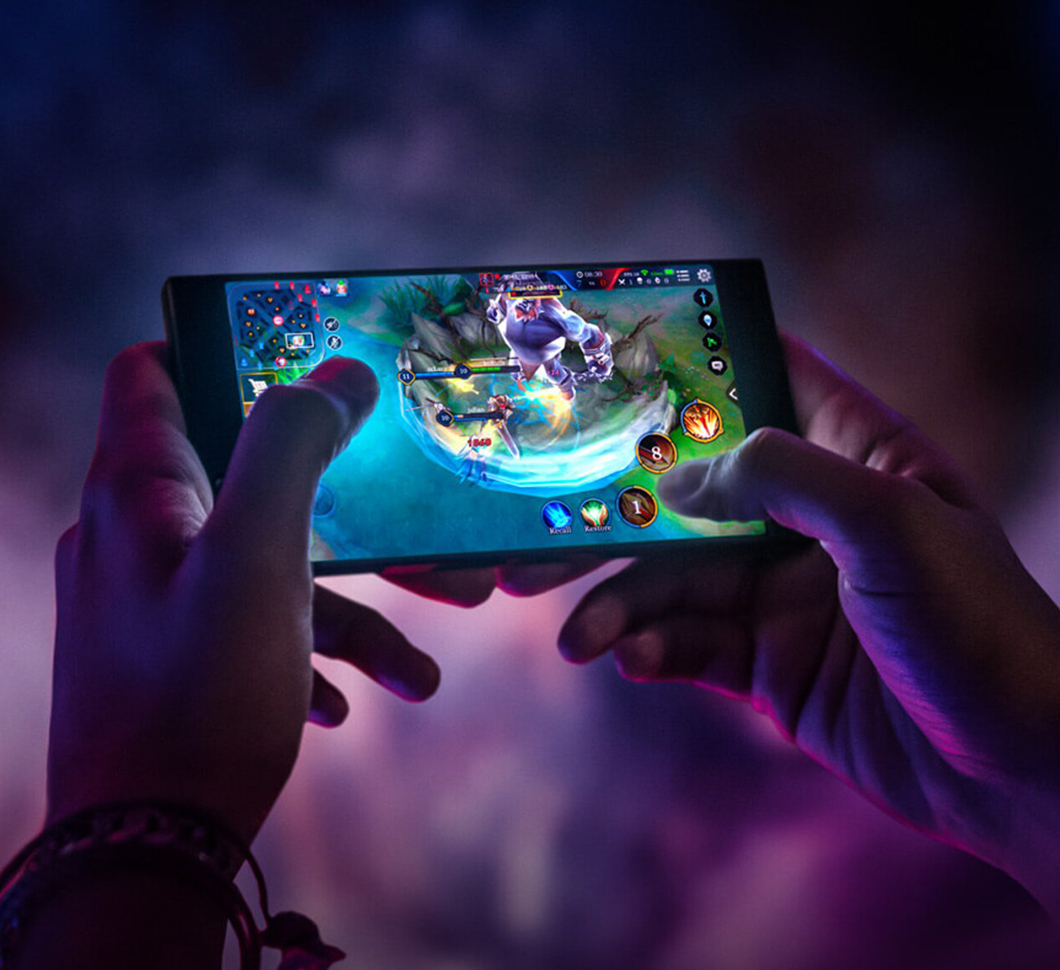 Mobile Gaming Trends 2025: Genres, Technologies, Demographics
Mobile Gaming Trends 2025: Genres, Technologies, Demographics  How to Make a Mobile Game in Unity 2025
How to Make a Mobile Game in Unity 2025 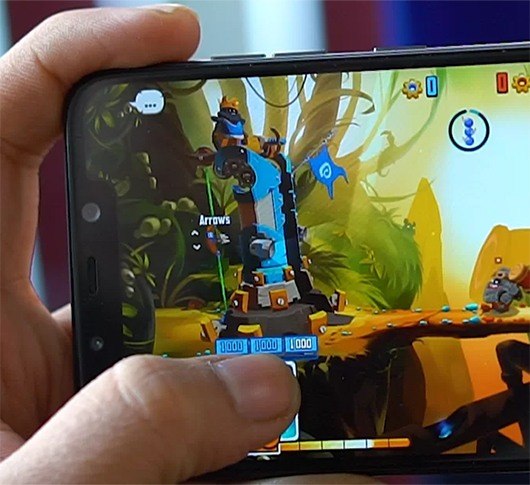 Mobile Game Testing: Types, Tools, and More
Mobile Game Testing: Types, Tools, and More 


























